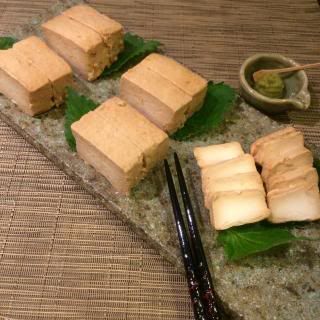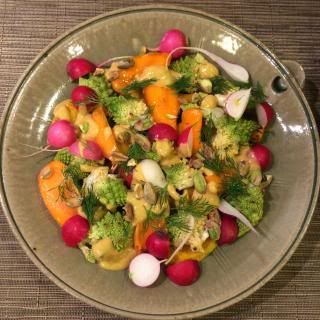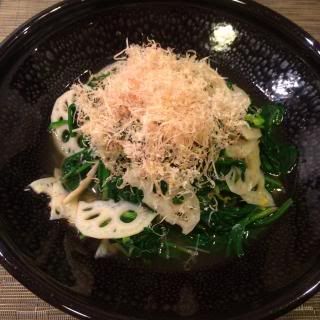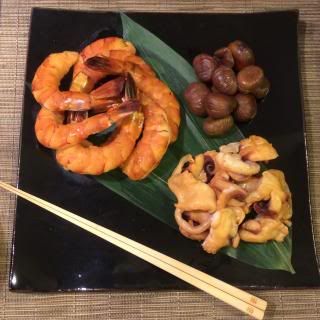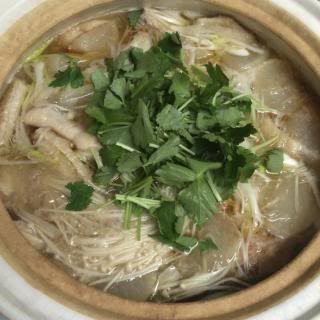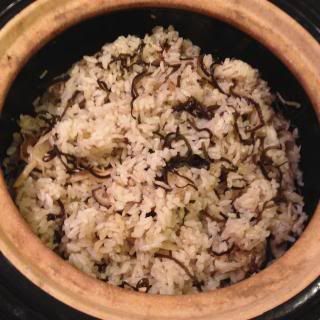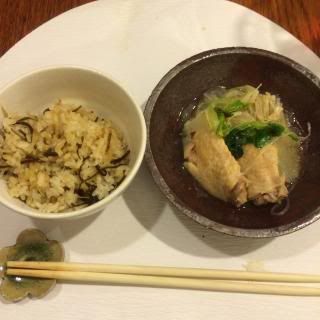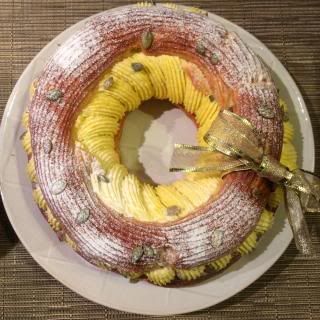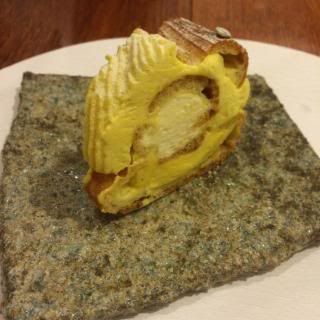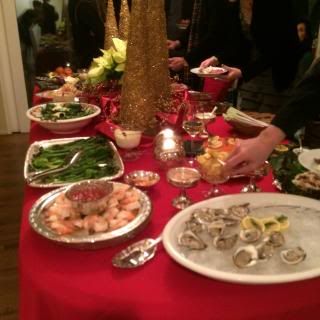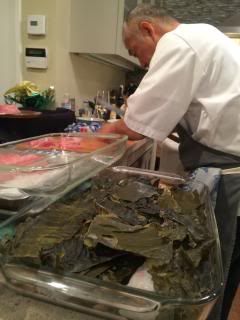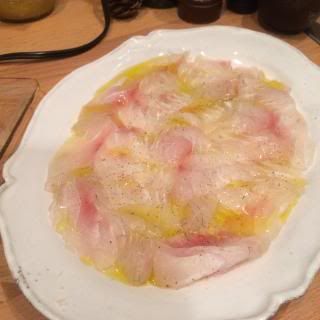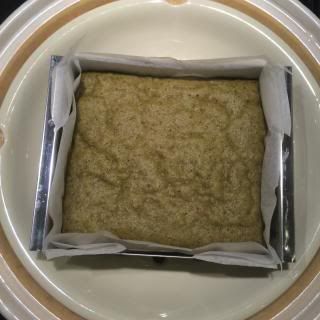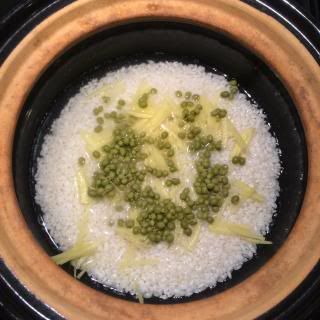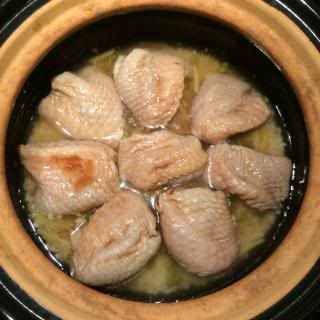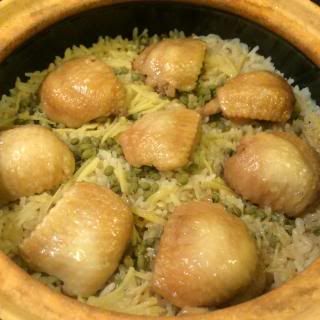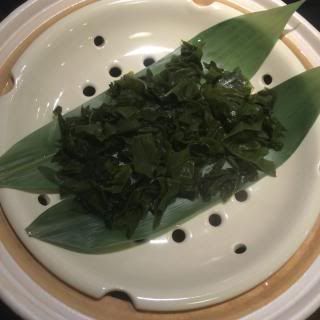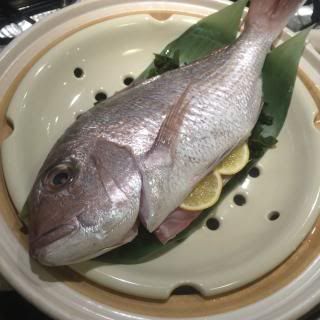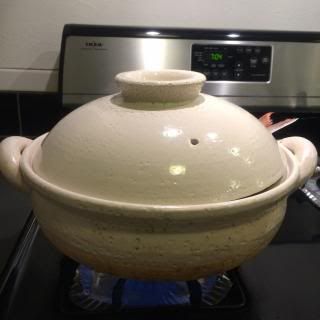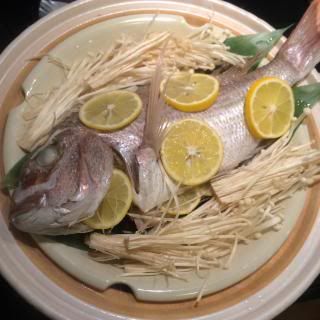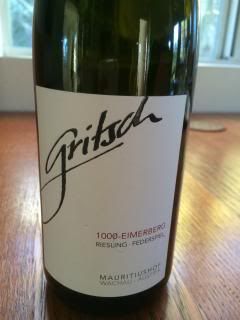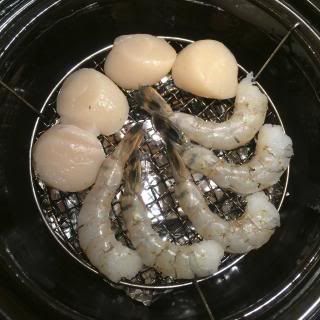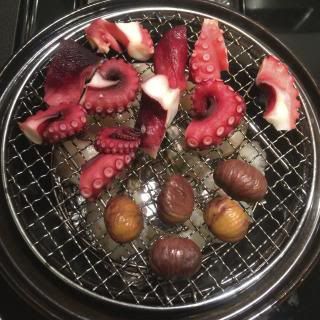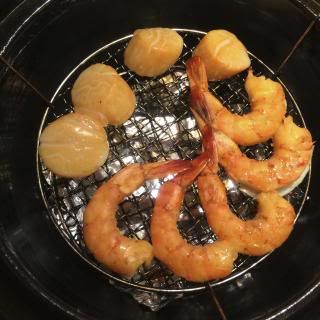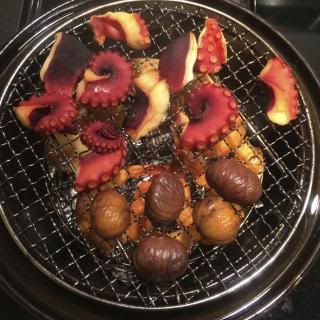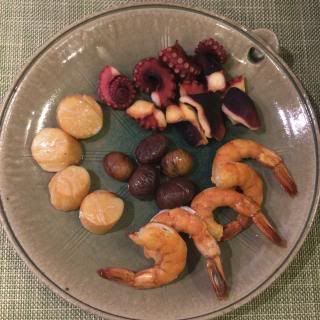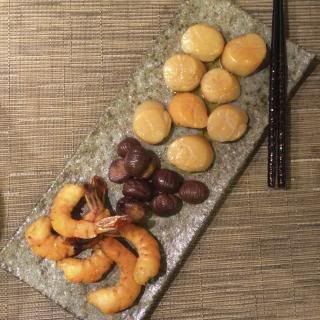 |
| Homemade konnyaku, served sashimi style with vinegar-seasoned Saikyo miso |
When konnyaku is extremely fresh, we enjoy it sashimi style without cooking it. I brought back ingredients for homemade konnyaku from Japan, so I made my own konnyaku to serve as sashimi! For homemade konnyaku, you can normally find already powdered dry konnyaku yam root, so that's what I got. The ingredients are only the konnyaku yam root (powdered), water, and calcium hydroxide as a coagulator.
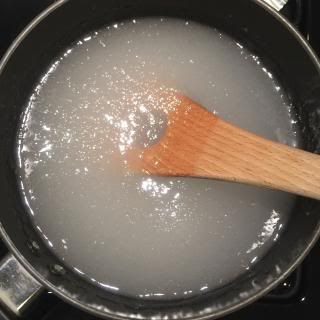
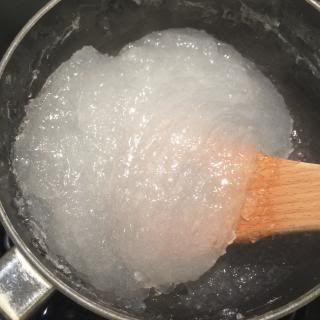
In a pot, you combine 850 ml water and 25 g powdered konnyaku yam root. Set over high heat, then as soon as the mixture starts bubbling, turn down to medium. Continue to stir for 7-8 minutes. The mixture will thicken like glue.
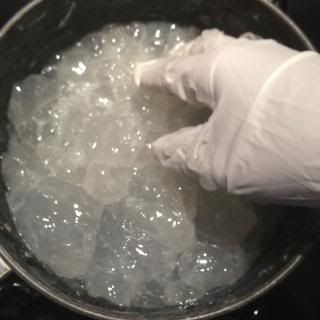
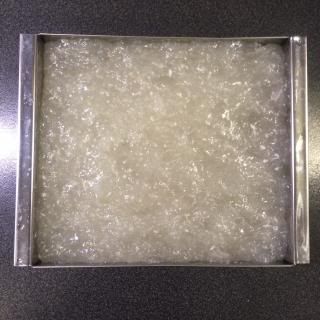
Remove the mixture from heat and let it cool down to 42C - 43C degrees. Add 1.5 g calcium hydroxide and mix by hand until the mixture forms into one piece. Transfer to a mold and push the surface to make it smooth and let the air out from inside. Let it set for a couple of minutes.
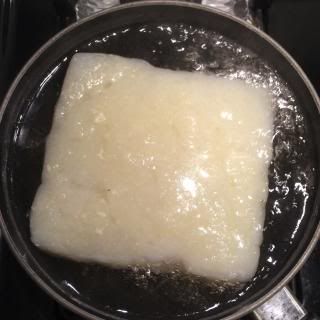
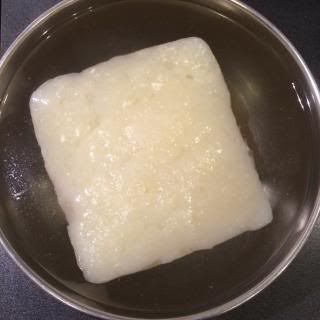
Remove the mixture from the mold and put in water in a pot. Set over high heat. As soon as the water starts boiling, reduce to simmer and let it cook for 20 minutes. Transfer to a bowl, filled with cold water. Let it soak in the water for more than 1 hour to remove bitterness.
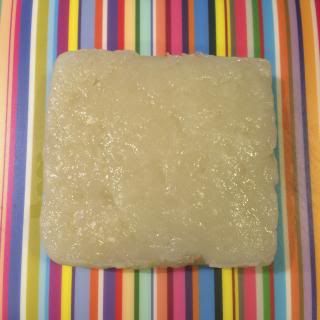
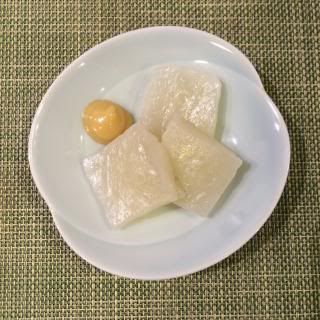
The homemade konnyaku was ready and so bouncy! As soon as I was ready, I cut a few slices for myself to try. Both the flavor and texture were superb and heavenly. Homemade konnyaku is the best!
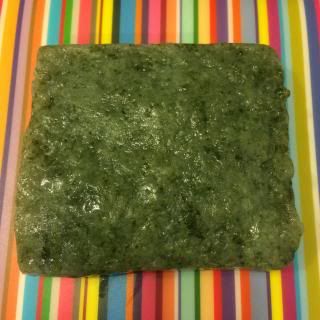
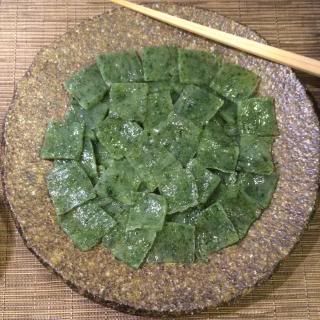
The other day, I made a different variation of konnyaku. I made "ao-nori" (aromatic seaweed flakes) konnyaku. It came out wonderful!
I gotta get more konnyaku ingredients next time I return to Japan. Until then, I will suffer real konnyaku withdrawals.

